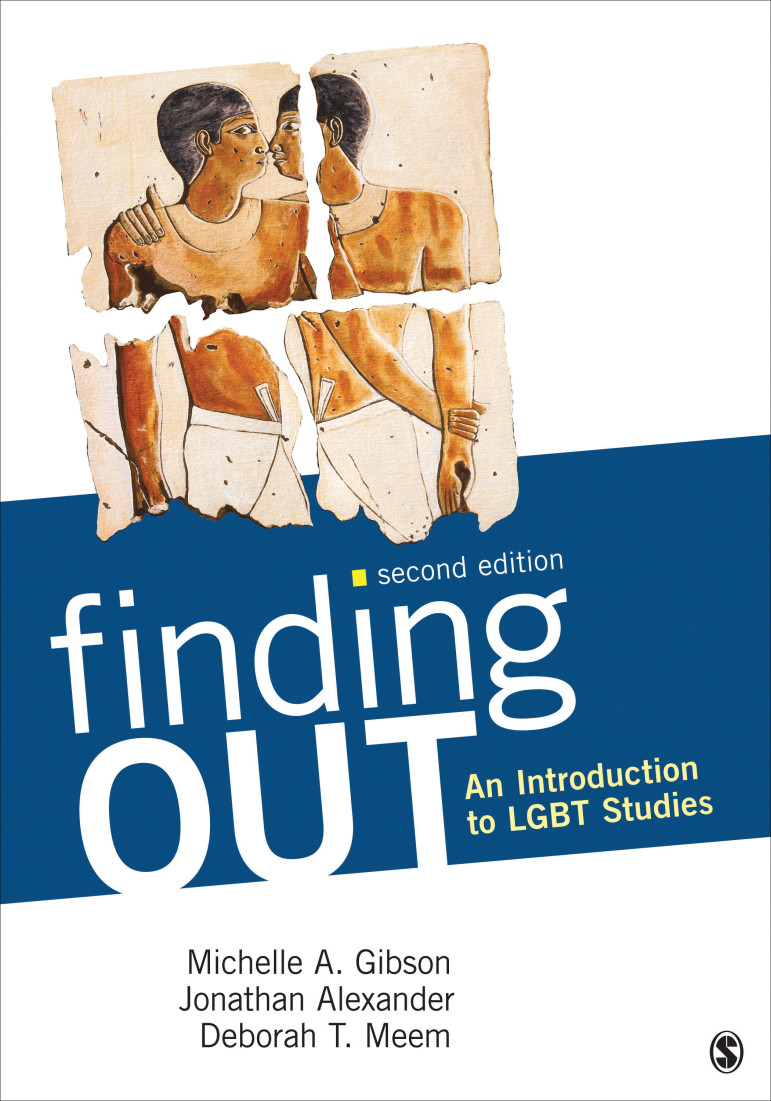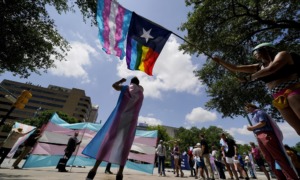 Finding Out: An Introduction to LGBT Studies
Finding Out: An Introduction to LGBT Studies
Michelle A. Gibson, Jonathan Alexander and Deborah T. Meem
Sage, 2014
412 pages
By Jami Jones
Even though “Finding Out: An Introduction to LGBT Studies” is a textbook for undergraduate college students, its readability and interesting array of information about LGBTQ (lesbian, gay, bisexual, transgender and queer) history, culture and politics make this a fascinating book to skim or read by youth workers seeking to understand the struggles, challenges and important contributions of gay and lesbian writers, musicians, and artists. Francis Bacon is credited with saying that “knowledge is power,” and, in this case, can lead to respect and greater appreciation of LGBTQ diversity.
Not content to write a general introduction to this topic, authors Michelle A. Gibson, Jonathan Alexander and Deborah T. Meem present theoretical frameworks for understanding the nuances and complexities of this topic. For example, the authors describe the theory of intersectionality and how multiple categories of identities such as race, ethnicity, social status, and economics combine to determine discrimination and prejudice. For instance, a white gay man might feel “oppressed by society’s negative attitudes toward LGBTQ people at the same time that he enjoys privilege connected to being a white man. Conversely, a black gay man may experience his queerness not only as a gay man but as a black man; that is, he negotiates two minoritized categories in U.S. culture.” Being aware of these complexities and nuances helps the youth worker to more effectively mentor and guide young people trying to negotiate a slippery terrain of sexual orientation, race, ethnicity, and social class. A glossary provides correct usage to present and past words such as queer that was “once used as a taunt against homosexuals, [but is] now reclaimed as an umbrella term to signify the diversity of LGBTQ identities and to assert the value of difference,” buggery, (anal intercourse) and BDSM (erotic practices involving dominance, submission, sadism, and role-playing). Using correct terminology may help youth workers communicate more respectfully and effectively with LGBTQ youth.
The authors possess the academic credentials to write such a readable and scholarly book on this subject. Gibson is professor emerita of the Department of Women’s, Gender, and Sexuality Studies at the University of Cincinnati. Alexander is professor of English at the University of California, Irvine. Meem is professor of the Department of Women’s, Gender, and Sexuality Studies at the University of Cincinnati. They are explicit in their intentions for this book and their view of queer history and culture. First, they place events in historical perspective because “when we write about the past, we do not assume that contemporary labels are necessarily useful to describe past desires. What looks like a gay, lesbian, bi, or trans identify from our perspective may have meant something very different to people in the past.” Second, the authors carefully explain the words used to describe the diversity of same-sex and gender variance. For instance, the meaning of lesbian has changed over time from a geographical term to a poetic style to an identity marker. Third, the authors do not subscribe to the notion of a gay global community in which every gay person is alike. They view the gay experience as complex and ingrained in culture, introducing different organizations — from Mexico City’s Semana Cultural Lésbico-Gay to New Delhi’s Campaign for Lesbian Rights and Beijing’s International Women’s Conference.
“Finding Out: An Introduction to LGBTQ Studies” is organized into four sections: history, politics, literature and the arts, and media. Each of the 15 chapters conclude with readings such as reprints of articles, poetry, or judicial, legal and diplomatic documents. Chapters contain “Find out More” boxes that direct readers to relevant studies and information. Lambda links — indicated by the lambda (λ) sign — alert readers that an issue under discussion is related to similar issues in other chapters help readers to navigate the books and make important connections. Suggested readings in each chapter provide reference information and direction for further study.
This book reads more like an interesting nonfiction rendering about the queer experience from ancient time to the present than many of the dry textbooks that I read in college.
Suggested Additional Reading
In “Microaggressions in Everyday Life: Race, Gender, and Sexual Orientation” (John Wiley & Sons, 2010), author Derald Wing Sue looks at covert bias, prejudice and discrimination. Sue writes, “The most effective way to keep a group out of any discourse is to keep them invisible.” The struggle to be visible and validated is a common theme in contemporary lesbian, gay, bisexual, transgender and queer (LGBTQ) cultures. Words such as ‘closet’ (as in ‘out of the closet’) are microaggressions that may seem innocuous but its usage allows the LGBTQ population to remain invisible. In addition to identifying microaggressions in race, gender and sexual orientation, Sue discusses the subtlety of workplace, classroom and mental-health put-downs
Jane Bluestein’s “Creating Emotionally Safe Schools: A Guide for Educators and Parents” (Health Communications, 2001) is a classic and one of the most complete on this topic. Bluestein writes, “School safety covers a much broader landscape than the violence that has served to get our attention. It’s about learning styles, social interactions, discipline policies, and bathroom breaks…it’s about the brain, body, and heart.” Each topic is well-researched and presented in a readable style.
In “Dignity for All: Safeguarding LGBTQ Students” (A Joint Publication, 2012), Peter Dewitt presents specific strategies about implementing a code of conduct to ensure student safety, and recognize and respond to overt and covert LGBTQ issues. Dewitt’s discussion about ways to include appropriate LGBTQ topics in the curriculum in combination with “Finding Out: A Introduction to LGBTQ Studies” are useful tools for engaging youth in conversations about art, politics, culture, bullying, and global matters about gender and sexuality.































